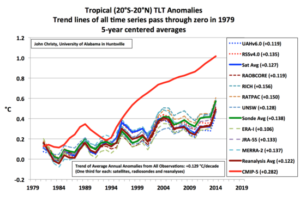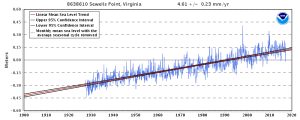by Uzbek, 7 juillet 2017 in ClimatoRéalistes
Le site carbonbrief a publié le 30 juin 2017 un article sous le titre : « Des corrections majeures aux données satellitaires augmentent de 140% le réchauffement depuis 1998[1] »
Précisons d’abord que Les satellites ne mesurent pas directement la température. Ils sont équipés de capteurs sensibles à la luminance de l’atmosphère et de la mer dans le spectre des infrarouges. Pour en dériver la température, des traitements informatiques sur les données brutes sont nécessaires.





